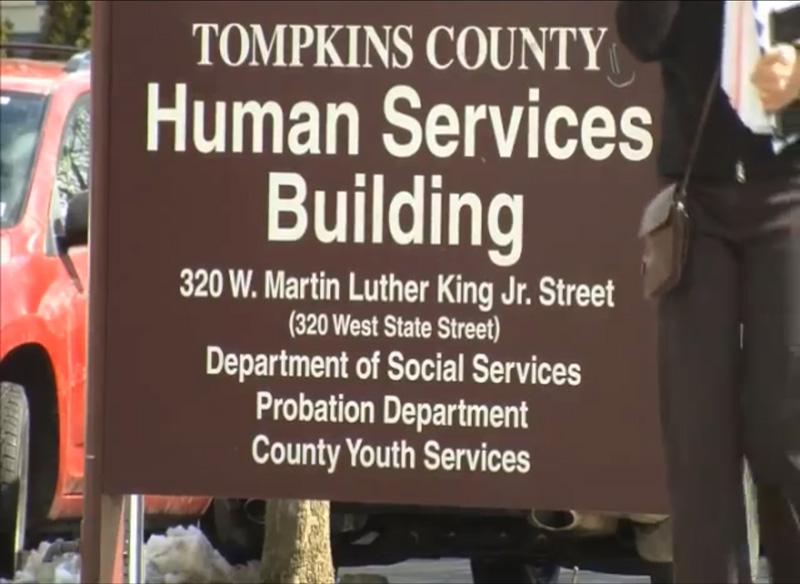“My mom told me to get out of the house and never come back,” Smith recalls.
At the time, Smith was going through a case of 30 beers a day. He would also regularly take cocaine, marijuana and pills.
The arguments between him and his mother escalated to the point when she threw him out.
“At the time, I was drunk and high, so it didn’t register as much, but after when I got sober, it was one of the most horrible experiences of my life,” he said. “I made my own mother tell me to that she never wanted to see me again.”
That night, Smith crashed at a friend’s house, drank and smoked some more. He overdosed on drugs and was taken to a hospital, where he stayed for a day and a half. His mother never visited him.
For the subsequent three weeks, he slept at friends’ apartments while going through withdrawal.
“I had the shakes all the time, I was vomiting a lot. It was just not a fun time,” he said.
A friend told him about the American Red Cross Homeless Shelter, where he stayed during the long and cold Ithaca winter nights. During the days, Smith would hang out downtown, finding shelter within the walls of the Tompkins County Public Library or at the Learning Web, a nonprofit youth agency that has been providing assistance for homeless youths ages 16 to 24.
Smith’s story isn’t unique. Dale Schumacher, executive director of the Learning Web, estimates that there are 500 to 600 homeless youths in Ithaca; according to the 2011 U.S. census, Ithaca’s population is 30,054 — although this number is inflated by the students at Ithaca College and Cornell University. The Independent Living Survey, which the Learning Web has conducted every three to four years since 2004, provides a comprehensive view of the homeless in Tompkins County, who they euphemistically call “independently living.”
“The over-riding factor is that their housing is extremely unstable, and because of that, I would say, for some, their lives are in chaos,” he said.
According to the 2011 Independent Living Survey — which is the most recent of these reports, 187 out of 225 youths surveyed between ages 15 and 25 stay at multiple places. In a given year, youths reported to having stayed at two to nine locations. One hundred fifty youths of those surveyed need help finding housing. Other top needs include transportation, employment and education. Lesser-ranked problems include affording food, living supplies or healthcare; loneliness and maintaining healthy relationships; and legal issues.
“To me, for such a small city, that’s a major problem,” Schumacher said.
During the six months when he was homeless, Smith remembers days when he wouldn’t eat because he couldn’t afford food or eat what was offered at the shelter. Because of his dietary needs, Smith can’t consume a lot of tomato sauce, mayonnaise or other highly fatty foods.
“When you’re homeless, that’s really cheap stuff to get,” Smith said.
For that first month, sometimes he wouldn’t eat on three or more days a week.
According to the Learning Web’s study, 40 percent of the 225 youths surveyed skipped meals because they couldn’t afford food. About 60 of those 225 youths don’t eat for a whole day because they lacked the money to support themselves. Even though some youths receive food stamps, 72 of the 225 skip meals because that money isn’t enough; 19 percent of food stamp recipients don’t eat for whole days.
That wasn’t a problem for Smith. After enrolling into food stamps a month after living at the shelter, Smith didn’t have a problem with food.
While organizations like the Learning Web and Tompkins County Youth Services provide assistance to homeless youth, Schumacher said reduced state and federal aid has hurt their programs. Out of a $750,000 budget, Schumacher said the Learning Web has lost $50,000 to $100,000 in funds since 2010.
In the past 10 years, there have been funding reductions in all agencies impacting youth from the federal, state, and local governments to nonprofits, Amie Hendrix, executive director of the Tompkins County Youth Services Department, said.
“People aren’t giving as freely because they are faced with their own economic burdens, so now we have less resources but we still have some needs,” Hendrix said.
The Learning Web, which has a small staff of nine in their facilities and three in its Youth Outreach Program — which specifically assists the homeless youth population —laid off two staff of its staff members in the past five years.
“Just a year ago, we had four, and you think it’s just one person, but that’s 25 percent, so that’s quite an impact,” Schumacher said.
Meanwhile, Smith, now 22, was able to get an apartment with a couple of his high school friends in the spring of 2010. Since then, he and his girlfriend have moved into an apartment together and have a 2-year-old daughter. After he got sober, he was also able to slowly resolve his relationship with his mother.
* Due to the personal nature of the story, Smith has asked to remain anonymous. His name has been changed in order to protect his privacy.







